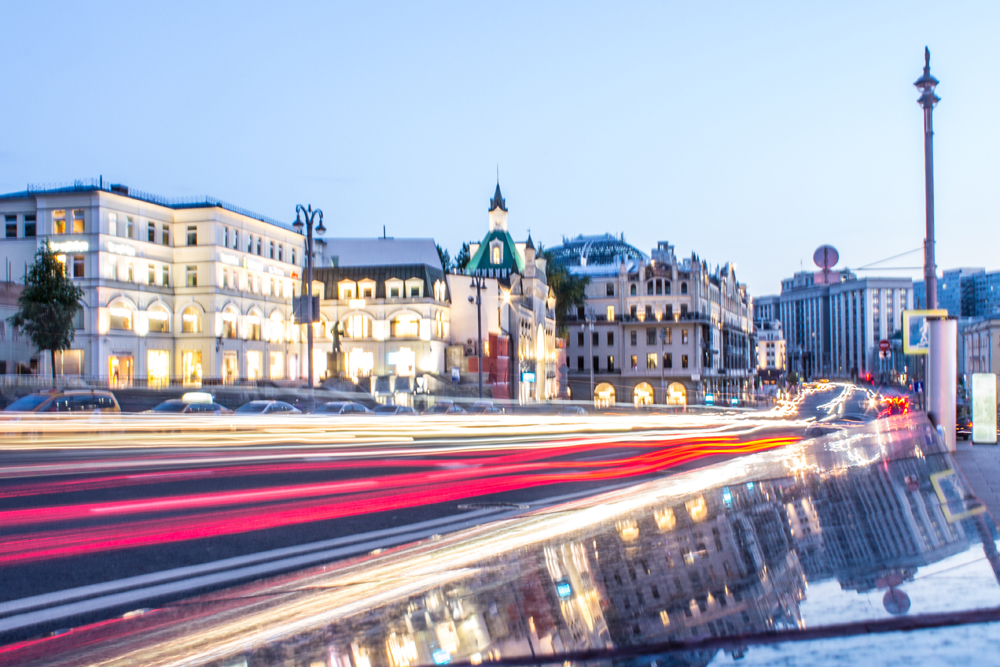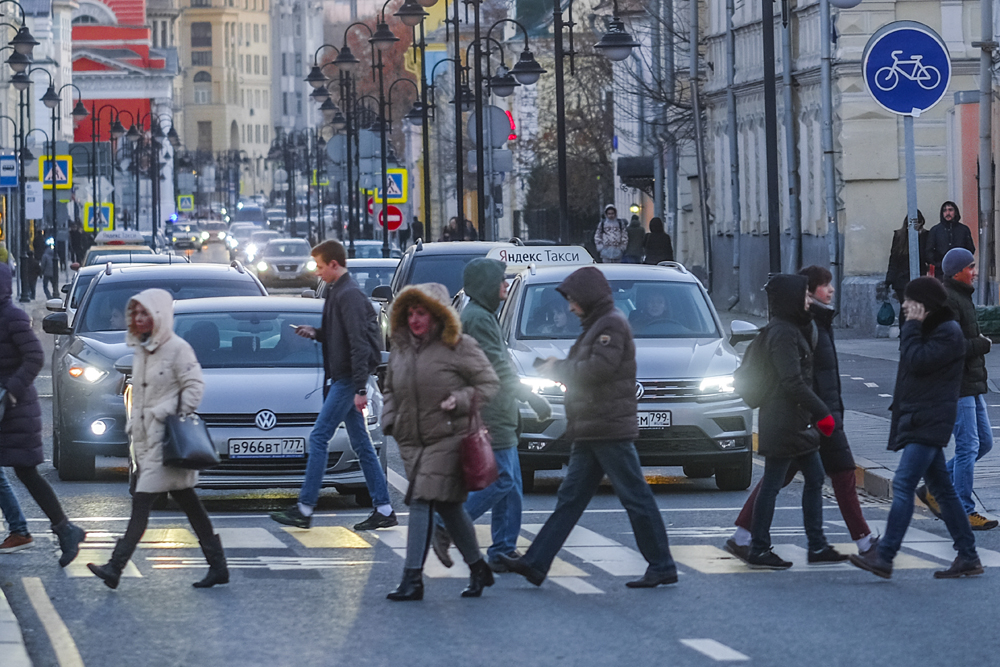
The government of Moscow has started designing a new transport strategy for the city, which will set out some major principles for the organisation of its traffic up to 2040.
Sergey Sobyanin, mayor of the Russian capital, backs the move to make more use of ITS on streets where drivers regularly find themselves logjammed.
In contrast to the existing strategy - a particular focus of which has been on the development of public transport in Moscow itself - the main task of the newly-designed document is creating conditions for the introduction of some of the latest, breakthrough ITS technologies within the city’s crowded transport network.
Moscow’s authorities say the introduction of these solutions has a particular importance, as it will result in the increase of the average speed of its traffic and contribute to a reduction in the number of road accidents.
The previous transport strategy was adopted in 2011. Its main idea was to transfer local inhabitants from personal cars to public transport: for this purpose, a special programme for the modernisation and improvement of the city’s transit network was implemented by Moscow regional authorities in a series of measures up to 2018.
Moscow wants public transport to become the top-priority, most convenient way of transportation for its inhabitants in years to come, leading inevitably to the decline of the number of cars in the city – a desire that is increasingly common to urban authorities all over the world.
Pressing problems
Measures to achieve this included the renewal of the transport fleet of the city and the allocation of special lanes for buses and so on – with the overall length of such lines now reaching 290km.
Successful implementation of the strategy allowed the city of Moscow to solve some of its most pressing problems in the field of transport, such as chaotic parking on the city’s streets.
Thanks to these measures, Moscow - which consistently ranked at the top of TomTom’s global traffic jam ranking - moved to fourth place in 2014, and dropped out of the top 10 busiest cities by the end of 2015.
However, despite those measures, the situation with traffic in the city started to deteriorate from the second half of 2015. In public statements Moscow Department of Transport has expressed concern about this – but analysts suggest the situation is mainly due to the lack of any major improvements in the transport complex of the city in recent years. As a result, traffic congestion in the city has resumed its growth and this has resulted in the appearance of big traffic jams.

At the end of 2018, TomTom’s survey put Moscow in fifth place out of 403 cities worldwide in terms of traffic congestion - while in the ranking of Inrix, compiled during the same year, the city ranked first among 220 cities in terms of the complexity of their traffic situation.
Commenting on these latest rankings, experts from the city’s transport department said that all the possible measures have been implemented – which means that a new strategy is needed. This, according to them, will provide an impetus for the further improvement of the situation with traffic in the city. For this purpose, international management consultancy firm McKinsey & Company has been hired to work on the design of a new strategy which prioritises ITS.
ITS ideas
According to an official announcement from the Moscow government, it is planned that some of the latest ideas in the field of ITS will be introduced. These include: the hyperloop technologies of Elon Musk, Big Data, virtual (VR) and augmented reality (AR), 5G, artificial intelligence (AI) and biometrics.
The annual volume of investments in the implementation of these developments is not disclosed. However, according to some sources in the Moscow regional government, spending is expected to be between US$2.5-3 billion annually.
Particular hopes are being placed on Vehicle to Everything (V2X) technology, a significant introduction of which is scheduled for the first half of 2020 within the transport infrastructure of the city.
“The number of cars on Moscow streets that will be equipped with V2X technology will significantly increase already this year,” confirms a spokesman for the office of Moscow mayor Sobyanin. “These technologies will provide an opportunity for vehicles to transmit data at a distance, informing about the proximity of pedestrians to the road and at pedestrian crossings. Thanks to the unique system, the cars will be able to recognise and report on the availability of parking spaces and the appearance of cars in the ‘dead’ zones.”
It is planned that the service will be implemented using the Russian Avtodata telematics platform, which is currently designed in the country in accordance with the recent order of Russian president Vladimir Putin. Employing AI, the platform is designed to notify drivers when they are on the road, including information about traffic snarl-ups and accidents.
According to Yaroslav Fedoseyev, one of its main developers, the service will become an alternative to Moscow’s ‘paid intersections’ which drivers have to pay to cross during certain hours.
Information sources
In addition to traffic density and jams, Avtodata will report on accidents, roadworks and closed sections of roads, as well as the condition of the roadway and other events. The main advantage of Avtodata will be a larger number of information sources: data will come not only from satellites, but also from intelligent transport networks.
There are also plans for the introduction of 5G technologies within the transport complex of Moscow. As part of these plans, Russia’s leading telecoms operator, MTS, together with Huawei, are currently finishing tests of several 5G-based transport solutions, which are conducted within the territory of VDNKh, a trade show and amusement park in Moscow.
According to the partners, these solutions are based on the interaction of road users with each other and with urban infrastructure. The exchange of data is carried out through a 5G network. Thanks to the transfer of data at a speed of three gigabits per second and ultra-low network latency, this technology allows the transfer of large amounts of information in real time.
Igor Yegorov, MTS vice president for regional development, says: “If 80% of cars on the Moscow streets have similar systems, the number of road accidents with pedestrians and cyclists in the city will be reduced by about half, compared to the current figures”.
According to MTS, an example of such a solution is ‘smart overtaking’, which is aimed at improving visibility during overtaking. An official spokesman said it allows the driver to receive video from cameras installed on other vehicles on the monitor of his car via the 5G network.
In addition, this year the partners plan to accelerate the introduction of another 5G-based solution: ‘safe pedestrian’. This allows pedestrians to receive a warning about an approaching car on a smartphone or AR glasses, while cars share video from their front cameras with other vehicles.
A particular focus will be on the expansion of the fleet of electric cars and the development of relevant infrastructure for them. For this purpose, a network of about 300 electric charging stations will be established by PAO Rosseti, Russia’s leading power company, in the coming months. The list of promising developments also includes an autonomous robo-taxi, and the Moscow city government says it will continue the development of public transport as part of the new strategy, with plans to launch a high-speed bus communication system (Bus Rapid Transit or BRT) on the city’s streets by the end of March.











